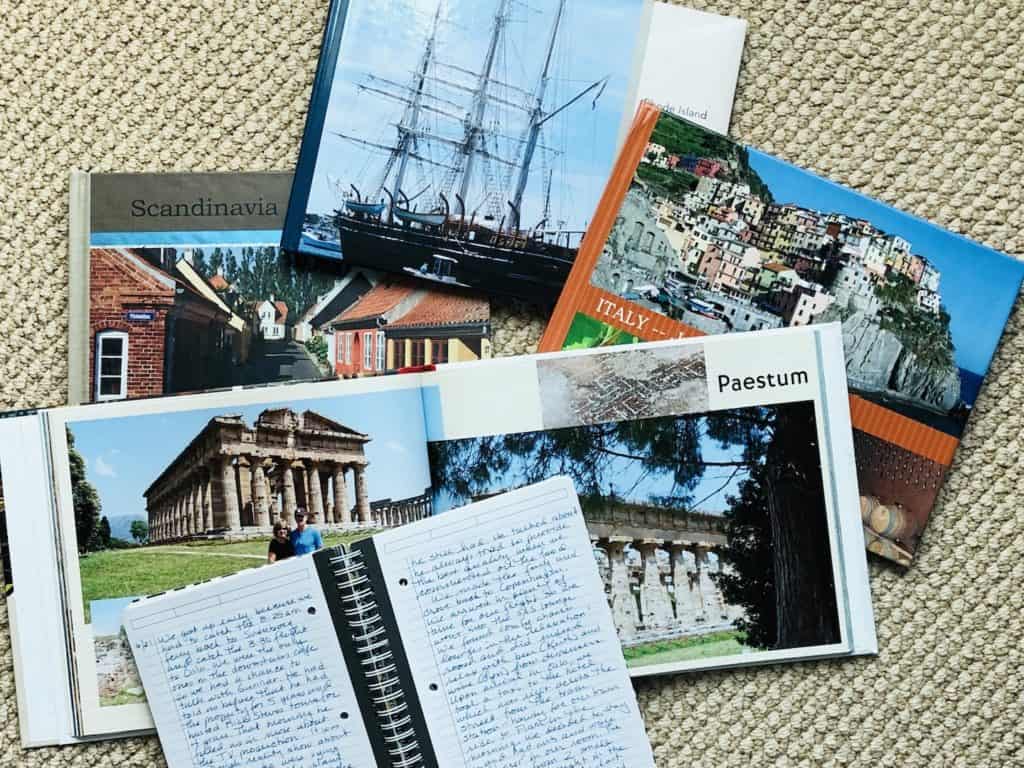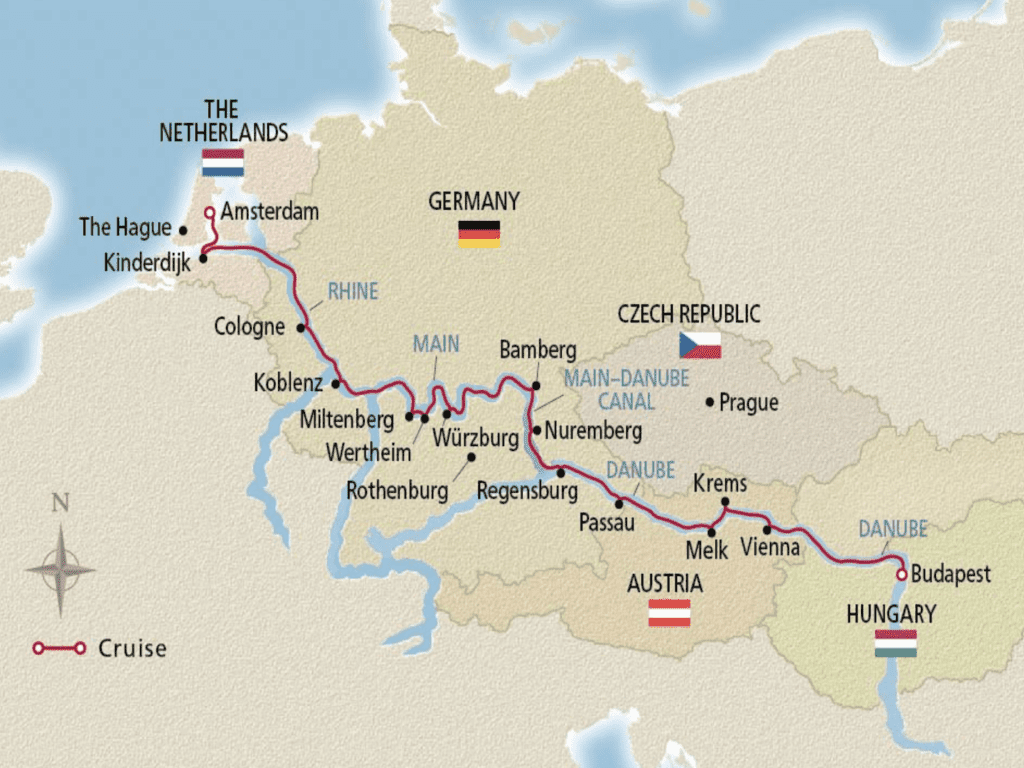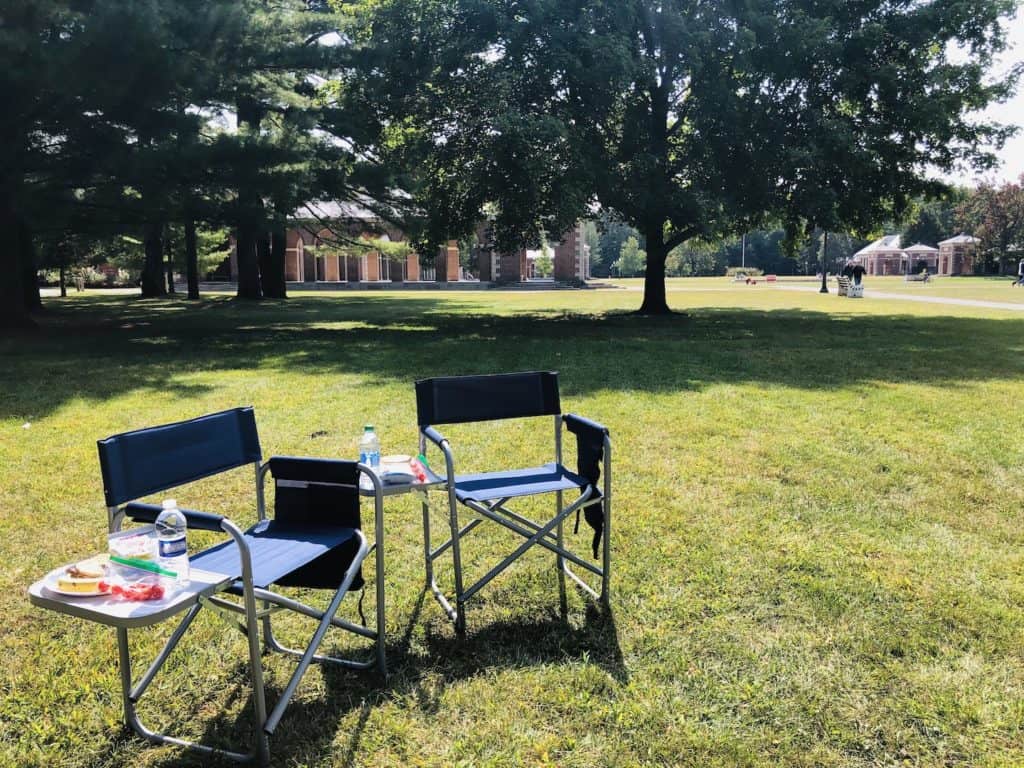Getting ready for a trip is so exciting! First, you narrow down the country you want to visit. Then you plan the trip and decide exactly where to go, what to see, where to stay, and so on. Then there are several important decisions and a list of “to-do’s” to tackle. Here is my essential travel timeline and tips to make your next vacation a great one! This timeline includes action steps for domestic and international travel. Asterisks mark the action items for traveling abroad. Have a great trip!
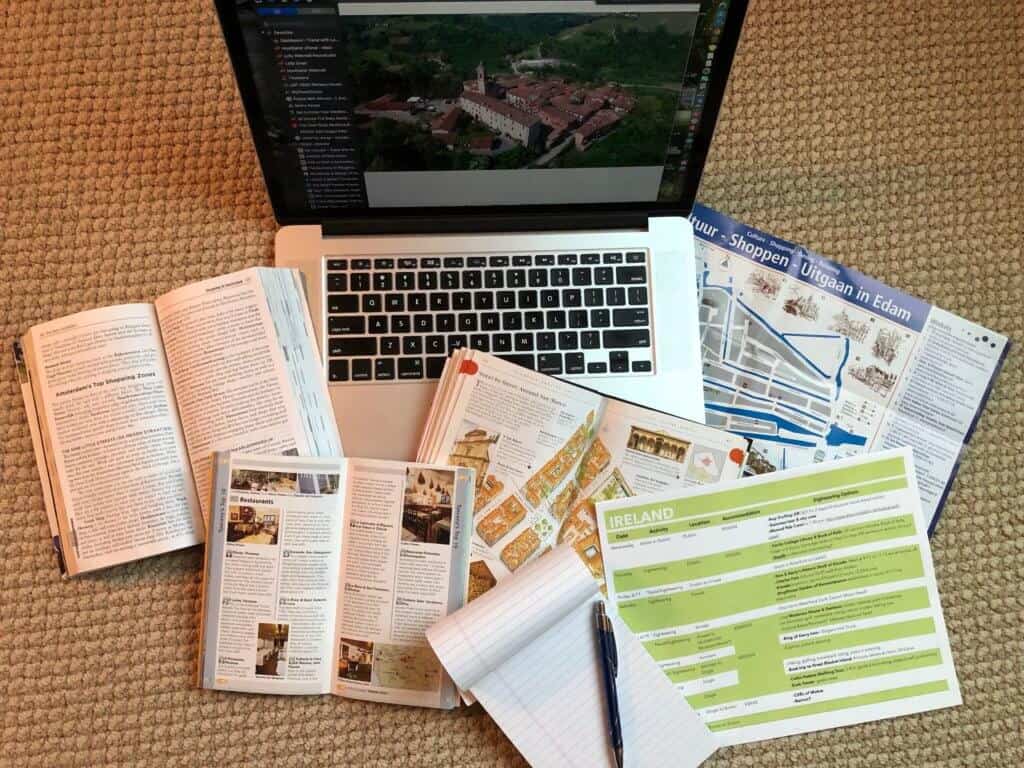
6 -12 MONTHS IN ADVANCE:
- WHERE TO? – Think about places you’ve always wanted to visit, calculate how much time you’ll have for this trip, and then narrow down what spots that are most appealing — always keeping your budget in mind. Things to consider when beginning to plan:
- Where do you most want to visit?
- How much time do you have for your trip?
- Does your travel destination have any (health or security) restrictions?
- What’s your budget?
- What do you most want to see and do there?
- STAY SAFE – One can never be too safe. Americans can check the U.S. Department of State website to learn about travel alerts and advisories in other countries. Also, consider signing up for the U.S. Department of State Smart Traveler Enrollment Program (STEP) which will alert you to security concerns while you’re away. Enrolling in STEP can also help the U.S. Embassy in the country you’re visiting reach you in case of an emergency condition in the area. In addition, it can assist family members in reaching you in an emergency. (On one trip, we received text notifications from STEP alerting us of public demonstrations in a nearby town. The text advised us to steer clear of the area for the afternoon.)
- DO YOUR RESEARCH – Find out more about your intended destination. There are so many possibilities for activities, so you’ll need to prioritize them and narrow down your list.
- Read guidebooks (buy your own and/or borrow them from your public library).
- Learn out more about your destination in general by reviewing online sources like Fodor’s, Frommer’s, and Lonely Planet as well as travel blogs.
- Check online travel reviews on sites like TripAdvisor and Yelp to read about other people’s ideas about places to stay, dine, and visit that fit your interests and budget.
- BOOK YOUR LODGING – Early booking helps ensure that you’ll get the type of room you want. For example, do you want a quiet room away from street noise, a room with a king bed, and/or a room with a view? Popular places often fill up quickly, so acting soon after you decide where you want to go makes sense. TIP: Check cancellation policies. Once you make a reservation (for a vacation home rental or hotel), make yourself a note or reminder on your calendar to alert you when the cancellation date arrives. Just in case.
- BOOK PLANES, TRAINS, FERRIES, CARS – You rarely can be too early in booking transportation.
- Book early so you make sure you capture the best departure and arrival times that suit your trip. For example, you may want to take a flight that arrives in the morning, thereby giving you a big chunk of the remaining day to explore the new locale. Booking early will help you keep your trip plans in synch.
- Booking a rental car early also enables you to get the type of transportation you want. For example, early bookings give you a better chance of getting your choice of vehicle regarding size and type of transmission. Also keep in mind that automatic transmission vehicles are not as common in Europe (and other places) as they are in the U.S., so you often need to specify if you want a car with an automatic transmission.
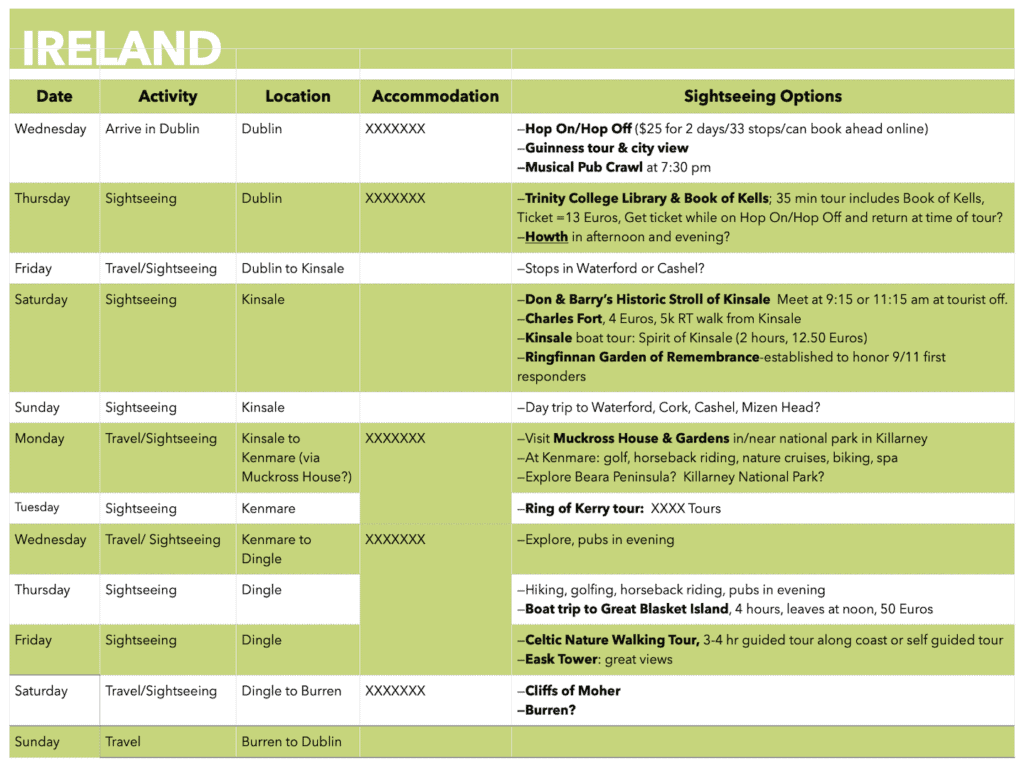
- PLAN GREAT EXPERIENCES – As mentioned, it’s often helpful to check TripAdvisor, Yelp, and other online rating sites to get ideas for lodging and restaurant recommendations. But now you can drill down for more specific ideas about how to get the most out of your trip. Oftentimes, these sites have interesting ideas for things to do that you might not have considered — but that can enrich your travel experience so much. Think cooking classes, boat or jeep tours, and other popular pastimes. Book early as they tend to fill up fast during peak travel months. On a trip to Crete, in Greece, a few years ago, my husband and I had the most delightful time at a cooking class in a tiny inland village. Also, we really enjoyed an all-day wine and olive jeep tour. We would not have discovered those opportunities if I hadn’t searched online. The positive reviews and a couple of emails to these places prompted me to book the excursions. (Emailing, particularly regarding international travel, is an efficient and effective way to gather more information to help make decisions.) So glad we did! Each outing ended up being a highlight of our stay — mainly because we were spending a bit of time with locals. Just keep in mind that tons of people post to these sites, so go with the general consensus, and ignore the over-the-top positive or negative comments.

- ORDER VENUE TICKETS IN ADVANCE – Oftentimes, you can order tickets to museums and other experiences in advance and skip the long lines. Some smaller venues restrict entrance to certain windows of time each day. Doing a quick online search of the important sights on your list will tell you what you need to know. This information includes days and hours of operation and whether reservations are necessary. Some venues require online reservations and sometimes even timed-entry tickets — even if no admission is charged. Timed-entry tickets help places (like museums and national and state parks) manage capacity at their locations.
- NEED TO UPDATE TRAVEL DOCUMENTS?
- For Americans traveling within the U.S., remember that a REAL ID-compliant driver’s license will be required to board domestic flights beginning May 7, 2025. So when it’s time to renew your license, add the REAL ID component (by showing the required documentation). Check online for your state’s REAL ID requirements. Without the READ ID-compliant license, Americans will need to carry their passports for flying in the U.S. effective May 2025.
- For international travel, make sure your passport is current for at least 6 months after you expect to return from your trip. In the U.S., passports for children under 16 years old are issued for 5 years; adult passports are good for 10 years. Allow up to 12 weeks to get or renew a passport (though you can pay an extra fee to expedite the process).
- BECOME A TSA-TRUSTED TRAVELER – The TSA-Trusted Traveler programs help to expedite security screenings for Americans at airports and other entry points. For instance, having TSA PreCheck means that you don’t need to remove your shoes, laptops, 3-1-1 liquids, belts, or light jackets when proceeding through security. Furthermore, Global Entry has the added benefit of expedited re-entry to the U.S. after foreign travel; this is a huge bonus after a long flight home when you just yearn to be through the airport and get back to your “home sweet home.” TSA Precheck cost $85; Global Entry includes TSA Precheck and is $100. Each is valid for five years and requires an online application plus a brief face-to-face interview at an airport. Check with your credit card company; some will refund the application money to you.
- CONSIDER TRAVEL INSURANCE – No one wants to suffer a broken leg or lost camera while traveling — or pay more for car rentals. Check your current health, car, and homeowner’s policies to see what, if anything, is covered when you’re away from home. There is a range of travel insurance coverages available — all depending on your needs and budget.
3-6 MONTHS IN ADVANCE:
- DOWNLOAD TRAVEL APPS – Let’s face it. Apps on our smartphones can make our lives easier. That’s especially true when traveling. You are probably already using GPS apps (Waze has navigated us around plenty of construction and accidents, saving us plenty of travel time). If you’re flying, having your airline’s app installed is crucial as you’ll be notified of delays, boarding times, and gate changes. Plus there are other helpful ones like FlightAware with real-time info on flight traffic and delays, the U.S. State Department’s Smart Traveler app mentioned above, and SplitWise that helps you divide the costs of traveling with others. Check my travel app recommendations for a complete list of helpful apps and websites.

- FIND THE BEST CAMERA OPTIONS – Are you happy with your camera or smartphone for taking your vacation pictures? If not, now is the time to research options. Do you want a telephoto lens? Do you want wireless capabilities on a new camera so you can easily share your pictures with family and friends back home? Or do you plan on snapping your pictures on your smartphone? If so, make sure you know all the tricks you can use to guarantee great photo memories when you get home. (For example, I like the option to press a button on my Apple Watch to initiate a timer on my smartphone camera; using the button on my watch as a remote makes the selfies that my husband and I take better because it’s easier to position the smartphone in an outstretched hand to capture a bit more background.) Check online for more information and YouTube tutorials for your camera and/or smartphone.
- GET TRAVEL GEAR – Make sure you have what you’ll need to make your trip comfortable. Consider lightweight backpacks or totes, walking/hiking shoes, and other useful travel gear. If traveling internationally, look for the best converters and find out what type of plugs you’ll need for the country you’ll be visiting as they are specific to certain countries/regions. TIP: Take along a small charging station (do a quick online search) that you and your group can easily plug in phones, tablets, and cameras to juice them back up. Having a centrally located spot for charging while away can also make it less likely that you’ll leave a charging cord behind — in an outlet behind a dresser or bed, for instance.
- VERIFY TSA SECURITY SCREENING REQUIREMENTS – If you’re flying from an American airport and are not sure if you can bring something (corkscrew? hiking poles?) in your carry-on bag when flying, check the TSA Security Screening site to see what is and is not permitted in carry-on and checked bags.
- SCHEDULE PET SITTING – Make sure to plan on caring for your fur babies, feathered friends, or other beloved pet(s).
UP TO 3 MONTHS IN ADVANCE:
- GET FOREIGN CURRENCY* – It’s wise to start off your trip with a wallet stocked with the currency you will be using upon your arrival. This saves headaches and costly currency conversion fees. Ask your bank or AAA office for this service, and request a range of denominations or you might be given only large bills. You’ll be thankful when you need some local currency for small purchases or tipping.
- NOTIFY YOUR BANKS* – If traveling internationally, contact your bank (for your checking, debit, and credit cards) to let them know of your travel plans. If you don’t, you risk them flagging your account as potentially fraudulent, assuming that your account or cards have been compromised or stolen. While you’re thinking of your credit cards, check if it imposes foreign transaction fees. If they do, consider applying for a card without such fees; a quick online search may help you find a card issuer that is more friendly to international travel and has the benefits you’ll find useful. TIPS: 1) Take more than one credit card with you; if you have two or more, you’ll have a backup to use in case one gets lost or stolen. 2) Have your bank’s phone number in your phone’s list of contacts (or written down), so you can easily call them if you need to.
- GET YOUR SMARTPHONE READY FOR TRAVEL – You may want to consider setting up your smartphone as a hotspot; doing so lets you access the internet (on devices without cell service like some tablets) easily without using public wi-fi (at airports or hotels, for instance) that may not be secure. Your cell phone provider can help you add that service to your plan. Also, if traveling internationally, check with your cell service provider to make sure your phone is ready to accept and receive calls and texts as well as use data (emails and internet searches) while you’re out of the country.
- SHARE YOUR ITINERARY – Make sure trusted family members or friends are aware of your travel plans: your flights, your lodging, and your daily schedule. Knowing that others know your plans is a great way to find peace of mind in case of an emergency.
- COPY YOUR PASSPORT* – Although you will always want to carry your passport with you when traveling, having a picture of it (on your smartphone) or a copy of it hidden in your suitcase (and with a trusted family member or friend) will be a godsend in case you lose your passport along the way. While you’re at it, you might want to make a copy of prescriptions for your glasses/contact lenses and medications in case those are lost/stolen on the trip.
- WATCH VIDEOS – Khan Academy and YouTube are stocked with content that can help provide historical and cultural context to your travels. Adding more background knowledge will surely enrich your experience as you can appreciate the art, architecture, food, wine, and people you meet so much more.
- LEARN BASIC PHRASES* – Being able to greet a shopkeeper or waiter in their language is always a plus when traveling abroad. It shows an appreciation for them and their country. Google Translate is a good place to find phrases in a jiffy; not only do you see the word or phrase (which can help, say, when you’re trying to locate the nearest ATM or ask how much something costs), but it also shares the audio equivalent to help make sure you don’t butcher the language too much. A bonus with Google Translate is that you can even take a photo of something (like a sign or product label) and it will translate the text to you.
- DECIDE ON LUGGAGE OPTIONS – Gone are the days when travelers packed scores of different outfits and shoes. Nowadays, many opt for more lightweight travel — often with only carry-on bags. Yes, it’s possible and a great idea. It’s a personal choice, to be sure, but if traveling with just carry-ons, you can swiftly move through the airports (no more baggage claim waits) and elsewhere. (My husband and I only travel with carry-ons and it’s helped us easily maneuver through centuries-old cities as we leave a train station or parking lot and stroll to our hotel. Traveling this light took a little bit of an adjustment, but we’ve found the convenience it offers outweighs the fact that I had to leave some outfits at home.)
- PLAN YOUR TRAVEL WARDROBE – Almost everyone (me included) tends to overpack. Doing so will only mean that you’ll be lugging more than you actually need and taking more or bigger luggage. Keep it simple! Make things easier by streamlining your outfits and picking a neutral color palette (like black, navy, brown) and mixing and matching tops, bottoms, and accessories (such as jewelry and scarves). If you take the time to pre-plan what you’ll wear, you will probably be able to travel for a couple of weeks with just carry-ons. It can be done (and it’s how my husband and I have traveled for years), although it does mean that you have to hand wash some things like shirts or undies (or pay for laundry services) along the way. TIP: If planning to hand wash clothes while you’re away, pack some inexpensive hangers to use for drying — and leave them behind when you leave. (Don’t tell anyone, but when I hand wash clothes while on the road, I just use a bit of shampoo — from the hotel freebies — to suds things up.)
TWO WEEKS TO GO!
- GET MEDICATIONS – Now is the time to make sure your meds are ready for the trip. In addition to prescriptions, remember any over-the-counter meds you usually use and will have to pack.
- CHECK LIQUID LEVELS – TSA regulations state that each passenger may carry liquids, gels, and aerosols in travel-size containers that are 3.4 ounces or less. They must all fit in a one-quart resealable bag in carry-on bags. So unless you’re planning on buying these things at your destination, plan carefully for shampoo, conditioner, toothpaste, mouthwash, and lotion. If you’re planning on checking a bag, larger size liquid containers can be placed in there. TIP: Most hotels provide small quantities of shampoo, conditioner, and lotion — so if you’re not too picky about the brand you use for vacation, you’ll be fine with scaling back on packing liquid toiletries.
- REREAD SECTIONS IN TRAVEL BOOKS – Refresh yourself with what you’ll be visiting and the context you’re interested in: architecture, art, history, etc.
- SCHEDULE OR PREPAY BILLS – Don’t forget your bills while you’re away! If opting to prepay, you may have to estimate payments in some cases for bills that vary each month like credit cards and utilities. If so, you may want to err on the side of a slight overpayment to ensure that you keep current on all your bills.
- STOP DELIVERIES – Stop your mail, newspaper deliveries, and any automatic deliveries you may have set up — or have someone pick them up for you. For Americans, consider signing up for the U.S. Postal Service Informed Delivery, so you can check online to see what mail you’re receiving each day — even though you may have arranged to have the USPS hold your mail while you’re away. (By the way, you can use Informed Delivery anytime — even if you’re at home.)
- FINALIZE PLANS FOR YOUR HOME – Make sure your home is looked after in your absence. Ideas:
- Have someone come over to water your plants inside and out.
- Have a neighbor park in your driveway once in a while to diminish a deserted look while you’re away.
- Get timers to place in certain rooms to have lights turned on each evening to give passersby the allusion that someone is home.
- DOWNLOAD CONTENT – What are you going to feel like reading or listening to on your trip? Figure out what you want to bring along and have your devices stocked with content (books, magazines, podcasts, movies, music). Doing so will keep you entertained during travel time (sitting at airports and/or on flights, trains, or boats) and other downtimes.
- MAKE ADDRESS CARDS FOR CABBIES* – When traveling internationally, minimize issues when you don’t speak the language. Write the name, address, and phone number for each place you’ll be staying on a different index card or sticky note. Keep these cards/stickies with your travel documents. Give the cards/notes to the cabbies who drive you to your hotels/inns/hostels or rental homes/apartments.
- SCHEDULE A RIDE TO THE AIRPORT – If flying, plan on how you’re getting to the airport. Are you driving there and parking in a lot, getting a ride from a friend, or taking a cab?
- BE FLEXIBLE – Inevitably, there’ll be hiccups — like delays — along the way. Travel doesn’t come without a few inconveniences. But the good experiences most likely will outweigh the bad. Have fun while you visit new places, learn new things, and meet new people! Enjoy the journey. Build memories. Happy travels!

